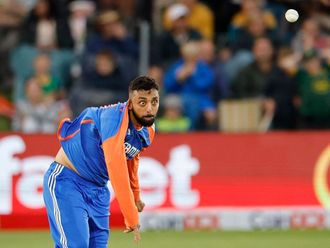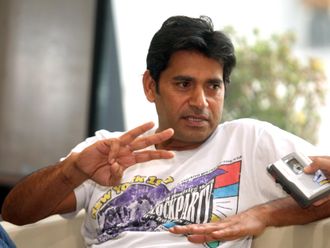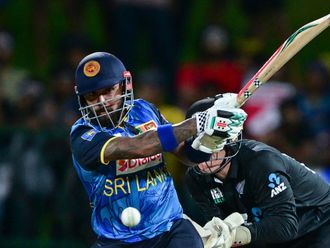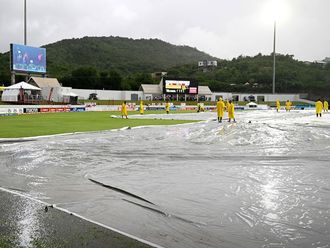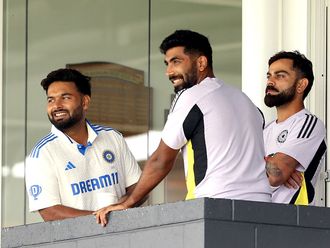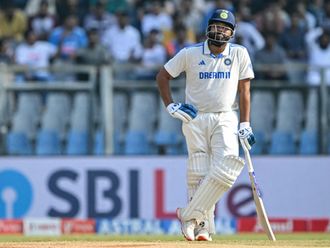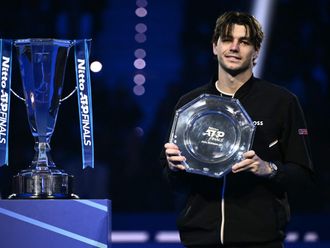London: For international batsmen of a certain era, a menacing aroma meant there was no mistaking when West Indies were in town. The nostrils gave it away; the whiff of leather used to get stronger. In the early 1980s, if you negotiated an over of Malcolm Marshall, your prize was a tussle with Joel Garner or Michael Holding. Their attack made the expression “one-paced” sound ominous.
But somewhere along the way historians will point you towards the retirements of the two Cs, Courtney Walsh and Curtly Ambrose a decade ago intimidation was lost. And it is a sign of how the global game has changed with the proliferation of slow pitches and advent of 20-over cricket that while they used to grip you in fear, they now tie you in knots.
You see, the 30-man provisional squad named by West Indies for next month’s World Twenty20 contained than 10 spinners. No, that was not a misprint. A third of their party were capable twirlers. Such are the capabilities of the premier ones among them that Darren Sammy’s team are serious contenders to snatch away England’s crown in spin-friendly Sri Lanka next month. You certainly won’t find a reputable bookmaker willing to offer pre-tournament odds in excess of 7-1.
In Sunil Narine, West Indies possess a trump card in subcontinental conditions. In the spring, he outbowled all the homegrown spinners to claim 24 wickets for Indian Premier League champions Kolkata Knight Riders, a tally that earned him the man-of-the-tournament award. So whereas the whoosh of wind past the nose previously signalled danger, the current Caribbean alarm bell is a gentle whirring of the seam as the ball fizzes this way or that. Narine is fundamentally a mystery spinner, whose fleeting presence on the scene to date is arguably his greatest weapon batsmen are yet to work him out.
Others of his ilk have proved less effective as familiarity has increased, losing their magic like a card trick when the slight of hand is exposed. Australia’s John Gleeson and Sri Lanka’s Ajantha Mendis are among them.
For now, however, there are enough opponents out there still unable to read the “knuckle ball” the 24-year-old Narine squeezes out with the aid of his middle and forefinger, that the possessor of international cricket’s most-famous Mohawk remains West Indies’ main threat. It increases once the opposition get behind the required scoring rate and where West Indies’ other frontline spinner comes in.
Samuel Badree, a 31-year-old physical education teacher at a Trinidad secondary school and compatriot of Narine, was selected in the final 15 ahead of the giant left-armer Sulieman Benn and fellow leg-spinner Devendra Bishoo, his higher-profile rivals.
In previous generations, Badree’s career, which comprises 14 first-class wickets over 10 years, would have passed without notice but 20-over cricket has provided a platform for his miserliness. When it comes to Twenty20 he is as tight as a snare drum. Badree, handed his international debut earlier this year, carries a lack of inhibition due to such late and unexpected exposure but with it comes an extraordinarily good T20 record: his career economy rate is 4.59, and the next best by anyone to have played in excess of 25 matches is Narine with 5.28.
What makes these figures even more astonishing is that more often than not he takes the new ball and bowls through his entire allocation up front. Back in the autumn of 2008, his spell of 4-0-15-1 for Trinidad Tobago came within a whisker of embarrassing England during a Stanford Super Series warm-up match.
It is the role West Indies want him to play in their quest to become the fourth team to win international cricket’s fledgling trophy. With Chris Gayle and Marlon Samuels more than capable back-up options on surfaces expected to be receptive to spin, and a batting unit crammed with big hitters, it could all add up to the sweet smell of success.
— Guardian News & Media Ltd


